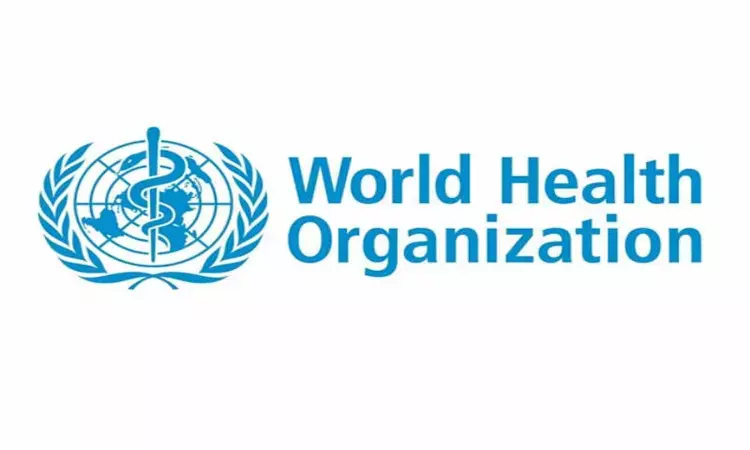- Home
- Medical news & Guidelines
- Anesthesiology
- Cardiology and CTVS
- Critical Care
- Dentistry
- Dermatology
- Diabetes and Endocrinology
- ENT
- Gastroenterology
- Medicine
- Nephrology
- Neurology
- Obstretics-Gynaecology
- Oncology
- Ophthalmology
- Orthopaedics
- Pediatrics-Neonatology
- Psychiatry
- Pulmonology
- Radiology
- Surgery
- Urology
- Laboratory Medicine
- Diet
- Nursing
- Paramedical
- Physiotherapy
- Health news
- Fact Check
- Bone Health Fact Check
- Brain Health Fact Check
- Cancer Related Fact Check
- Child Care Fact Check
- Dental and oral health fact check
- Diabetes and metabolic health fact check
- Diet and Nutrition Fact Check
- Eye and ENT Care Fact Check
- Fitness fact check
- Gut health fact check
- Heart health fact check
- Kidney health fact check
- Medical education fact check
- Men's health fact check
- Respiratory fact check
- Skin and hair care fact check
- Vaccine and Immunization fact check
- Women's health fact check
- AYUSH
- State News
- Andaman and Nicobar Islands
- Andhra Pradesh
- Arunachal Pradesh
- Assam
- Bihar
- Chandigarh
- Chattisgarh
- Dadra and Nagar Haveli
- Daman and Diu
- Delhi
- Goa
- Gujarat
- Haryana
- Himachal Pradesh
- Jammu & Kashmir
- Jharkhand
- Karnataka
- Kerala
- Ladakh
- Lakshadweep
- Madhya Pradesh
- Maharashtra
- Manipur
- Meghalaya
- Mizoram
- Nagaland
- Odisha
- Puducherry
- Punjab
- Rajasthan
- Sikkim
- Tamil Nadu
- Telangana
- Tripura
- Uttar Pradesh
- Uttrakhand
- West Bengal
- Medical Education
- Industry
WHO: Spread of coronavirus by 'asymptomatic' less likely

New Delhi- The spread of Covid-19 by an asymptomatic or someone who is not showing any symptoms appears to be less likely, said WHO in the recently published summary of transmission of Covid-19 including symptomatic, pre-symptomatic and asymptomatic patients.
The study acquires special importance as India enters the second week of Unlock1.0, with restaurants, religious places, malls opening up, added to a vast population straying out for morning and evening walks.
According to the WHO's report, "Comprehensive studies on transmission from asymptomatic individuals are difficult to conduct, but the available evidence from contact tracing reported by Member States suggests that asymptomatically-infected individuals are much less likely to transmit the virus than those who develop symptoms."
Maria Van Kerkhove, the World Health Organization's technical lead for Covid-19 response in a tweet said "In these data, it is important to breakdown truly asymptomatic vs pre-symptomatic vs mildly symptomatic.
"Also to note that the per cent reported or estimated to be "asymptomatic" is not the same as the per cent that are asymptomatic that actually transmits."
The WHO said among the available published studies, some have described occurrences of transmission from people who did not have symptoms. For example, among 63 asymptomatically-infected individuals studied in China, there was evidence that 9 (14 per cent) infected another person. Furthermore, among two studies which carefully investigated secondary transmission from cases to contacts, one found no secondary transmission among 91 contacts of 9 asymptomatic cases, while the other reported that 6.4 per cent of cases were attributable to pre-symptomatic transmission.
"The available data, to date, on onward infection from cases without symptoms comes from a limited number of studies with small samples that are subject to possible recall bias and for which fomite transmission cannot be ruled out," said the WHO.
Some people infected with the COVID-19 virus do not ever develop any symptoms, although they can shed virus which may then be transmitted to others. The WHO said one recent systematic review found that the proportion of asymptomatic cases ranged from 6 to 41 per cent, with a pooled estimate of 16 per cent (12–20), although most studies included in this review have important limitations of poor reporting of symptoms, or did not properly define which symptoms they were investigating. Viable virus has been isolated from specimens of pre-symptomatic and asymptomatic individuals, suggesting, therefore, that people who do not have symptoms may be able to transmit the virus to others, added the WHO.
Van Kerkhove in a media briefing reportedly said that from the data examined by WHO, it still seems to be rare that an asymptomatic person actually transmits onward to a secondary individual.
The WHO said that according to the current evidence, COVID-19 virus is primarily transmitted between people via respiratory droplets and contact routes. "Droplet transmission occurs when a person is in close contact (within 1 metre) with an infected person and exposure to potentially infective respiratory droplets occurs, for example, through coughing, sneezing or very close personal contact resulting in the inoculation of entry portals such as the mouth, nose or conjunctivae…. Therefore, transmission of the COVID-19 virus can occur directly by contact with infected people, or indirectly by contact with surfaces in the immediate environment or with objects used on or by the infected person (e.g., stethoscope or thermometer)", added the transmission study.
Medical Dialogues Bureau consists of a team of passionate medical/scientific writers, led by doctors and healthcare researchers. Our team efforts to bring you updated and timely news about the important happenings of the medical and healthcare sector. Our editorial team can be reached at editorial@medicaldialogues.in.
Dr Kamal Kant Kohli-MBBS, DTCD- a chest specialist with more than 30 years of practice and a flair for writing clinical articles, Dr Kamal Kant Kohli joined Medical Dialogues as a Chief Editor of Medical News. Besides writing articles, as an editor, he proofreads and verifies all the medical content published on Medical Dialogues including those coming from journals, studies,medical conferences,guidelines etc. Email: drkohli@medicaldialogues.in. Contact no. 011-43720751


